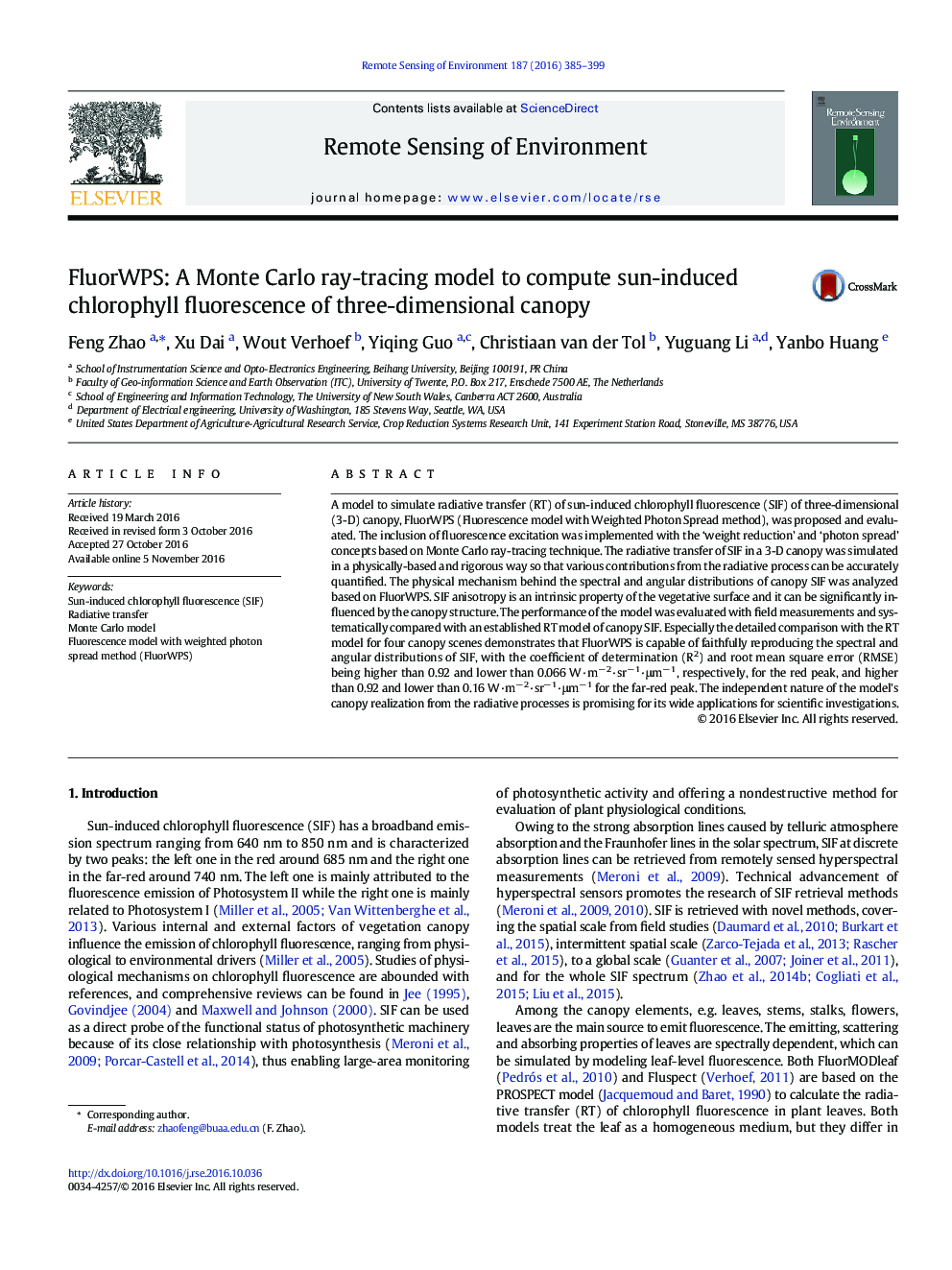| Article ID | Journal | Published Year | Pages | File Type |
|---|---|---|---|---|
| 6344868 | Remote Sensing of Environment | 2016 | 15 Pages |
Abstract
A model to simulate radiative transfer (RT) of sun-induced chlorophyll fluorescence (SIF) of three-dimensional (3-D) canopy, FluorWPS (Fluorescence model with Weighted Photon Spread method), was proposed and evaluated. The inclusion of fluorescence excitation was implemented with the 'weight reduction' and 'photon spread' concepts based on Monte Carlo ray-tracing technique. The radiative transfer of SIF in a 3-D canopy was simulated in a physically-based and rigorous way so that various contributions from the radiative process can be accurately quantified. The physical mechanism behind the spectral and angular distributions of canopy SIF was analyzed based on FluorWPS. SIF anisotropy is an intrinsic property of the vegetative surface and it can be significantly influenced by the canopy structure. The performance of the model was evaluated with field measurements and systematically compared with an established RT model of canopy SIF. Especially the detailed comparison with the RT model for four canopy scenes demonstrates that FluorWPS is capable of faithfully reproducing the spectral and angular distributions of SIF, with the coefficient of determination (R2) and root mean square error (RMSE) being higher than 0.92 and lower than 0.066 W·mâ 2·srâ 1·μmâ 1, respectively, for the red peak, and higher than 0.92 and lower than 0.16 W·mâ 2·srâ 1·μmâ 1 for the far-red peak. The independent nature of the model's canopy realization from the radiative processes is promising for its wide applications for scientific investigations.
Keywords
Related Topics
Physical Sciences and Engineering
Earth and Planetary Sciences
Computers in Earth Sciences
Authors
Feng Zhao, Xu Dai, Wout Verhoef, Yiqing Guo, Christiaan van der Tol, Yuguang Li, Yanbo Huang,
